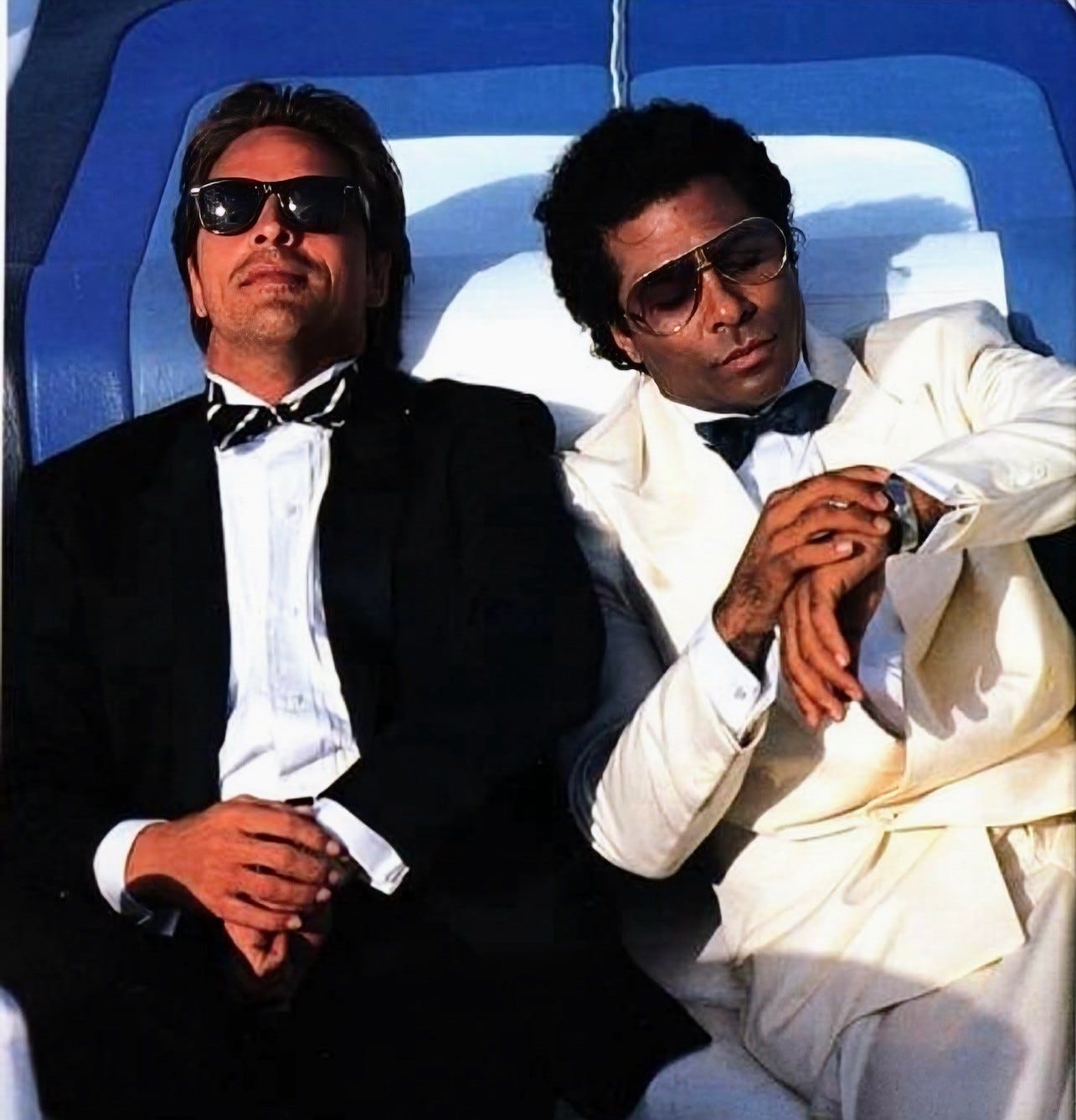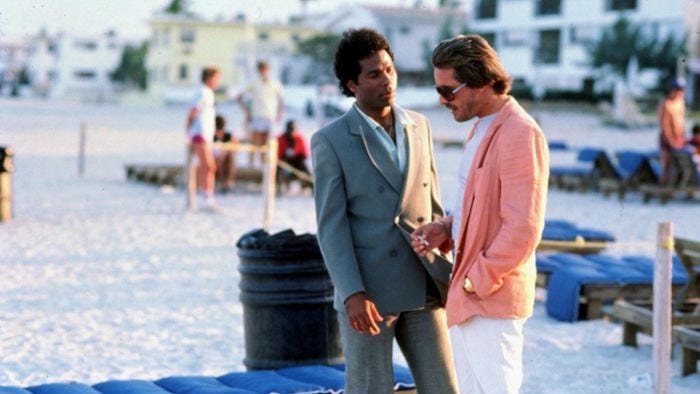As Miami Vice reaches its 40th anniversary, it stands not merely as a relic of 1980s television but as an indelible mark on our cultural and historical memory. The show's emergence in 1984 proved more than a debut; it was an audacious declaration that television could be art, style, and revolution all at once. Its recent commemoration has prompted a fresh reflection on its profound impact, both on the medium and on the world it depicted.
Miami Vice, with its lush visuals and pulsating soundtrack, was not simply a network show but a full-blown aesthetic experience. It was, in many ways, an early progenitor of what we now consider "high concept" television, blending the grit of crime drama with the glossy allure of fashion and music. The show's creation was a bold venture by Michael Mann, whose vision was to craft a series that eschewed conventional storytelling for a more immersive, sensory-driven narrative.
Critics today marvel at how Miami Vice's neon-drenched palette and innovative use of music seamlessly combined to form an audacious symphony of sight and sound. The show's flair for integrating contemporary music with its narrative was revolutionary, embedding tracks by Phil Collins and Jan Hammer into the DNA of its storytelling. It is this synthesis of form and content that has helped the show withstand the vicissitudes of time.
From its inception, Miami Vice was more than a reflection of the times; it was a harbinger of cultural transformation. The series was both a product and a critique of its era: a lavish celebration of excess juxtaposed with a sobering portrayal of crime and corruption. Its protagonists, Detectives Sonny Crockett and Ricardo Tubbs, were emblematic of an era in transition—caught between the glamour of the 1980s and the darker undercurrents of societal change and its attendant drawbacks.
The show's aesthetic choices—luxurious cars, pastel suits, and a propensity for the surreal—were not merely stylistic flourishes but integral to its storytelling. The ability to juxtapose the glamorous with the gritty provided a template for future series, influencing everything from procedural dramas to high-octane thrillers.
As we reflect on its 40-year journey, Miami Vice emerges not just as a nostalgic artifact but as a symbol of popular art’s potential to innovate and inspire. Its anniversary is not merely a celebration of the past but a testament to its enduring influence—a reminder that great art, in whatever form, often defies its moment and continues to resonate through the ages.
The show's impact on Miami itself cannot be overstated. What began as a potential blight on the city's reputation—a glamorization of its chronic crime problems—soon became its unexpected saving grace. The series' emphasis on Miami's splashy architecture, aquamarine seas, cultural exoticism, and yes, pink flamingos, served as an inadvertent promotional campaign for the city's booming tourist industry. By the late 1980s, Miami Vice had contributed to the revitalization of once-decrepit Miami Beach, helping the city reclaim its image as a trendy resort playground for the wealthy and fashionable.
As the 40th anniversary celebrations unfold, fans and cast members alike gathered in Miami this past weekend to commemorate this cultural phenomenon. Edward James Olmos, whose portrayal of the brooding Lieutenant Martin Castillo became iconic, reflects on the show's legacy: "We're celebrating the 40th anniversary of an unbelievable journey that we took here from 1984 through 1989 that changed the course of not only my career, not only the career of many many many Latinos and people that became understanding of who they are," he said. "It really was the start of understanding the city of Miami and South Miami Beach."
In the end, Miami Vice remains a testament to television's once-great power to shape culture and redefine artistic boundaries. The show's legacy extends beyond its original run, influencing modern streaming giants like Netflix and HBO, which have inherited its mantle of cultural impact and artistic innovation. From its inception, Miami Vice dared to be different, pushing the envelope of what television could be. It revolutionized the medium's aesthetic, from its cinematic visual style to its groundbreaking use of contemporary music. The show's impact on fashion, tourism, and even urban development in Miami itself speaks to its far-reaching influence. By blending style with substance, addressing the political whilst reveling in 1980s excess, Miami Vice created a complex cultural artifact that continues to resonate. In doing so, it carved out a place in the pantheon of American popular culture that remains secure, 40 years on.
-XJM






